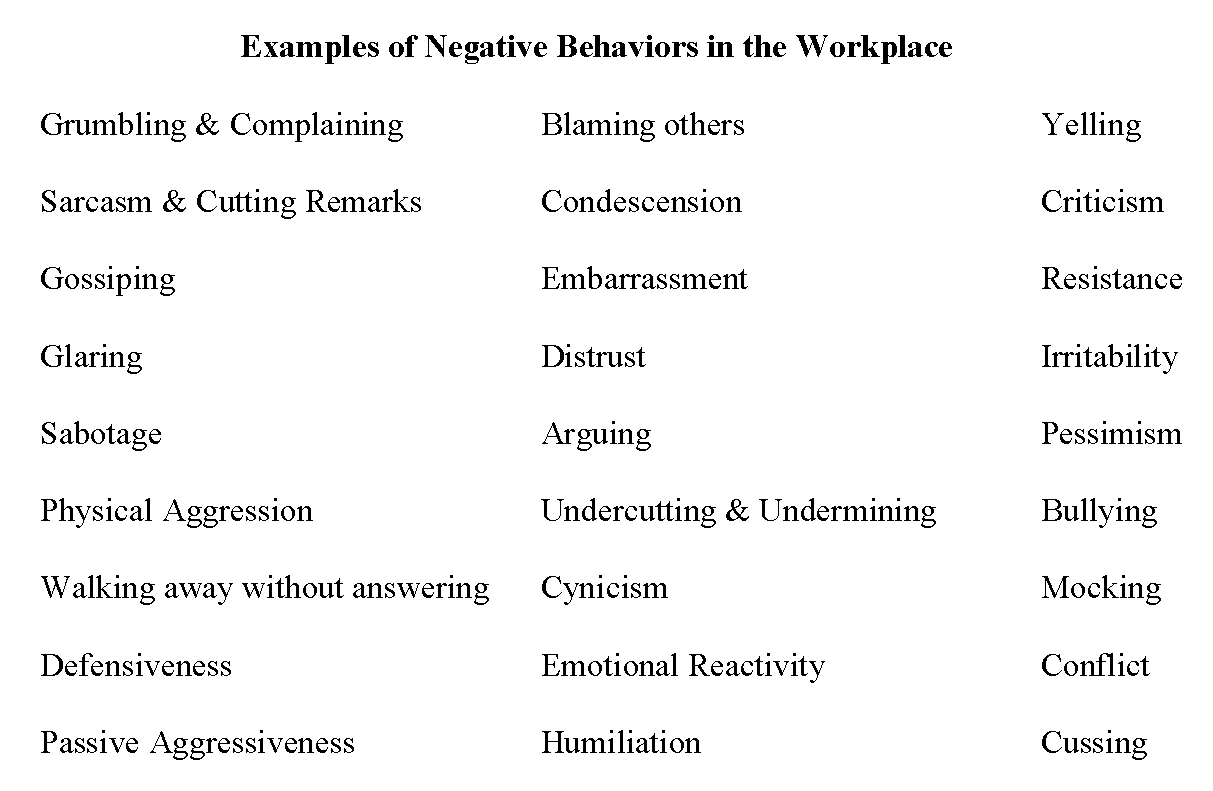Negativity is one of the most common, and deeply ingrained, obstacles to a healthy work environment. When working with front-line employees, supervisors and mid-level managers in a variety of industries, a frequent question I hear is, “What can I do to create more positive interactions in my workplace? People are so negative here!”
At Appreciation at Work, our focus is on building positive, healthy relationships in the workplace, and we do this primarily by helping people learn how to communicate authentic appreciation, build trusting relationships, and relate to others in a respectful way. But we also have to deal with life as it exists, and another avenue to building positive relationships is to address the issues that interfere with that process.
Negativity: What is it, really?
Believe it or not, the term “negativity” does not mean the same thing to everyone or display itself consistently in all work settings. Each facility, or even departments within a facility, can be negative in different ways. So, the first step is to define: “What does negativity look like in your work setting?”
In getting feedback from supervisors and employees, we came up with a long list of common behaviors and characteristics.
Where Negativity Comes From
Negative reactions are created by a variety of factors, and often a combination of issues. One of the most frequently ignored set of factors are physiological ones. While it becomes obvious once mentioned, we need to remember that we are more likely to react with negative behavior when we are tired, hungry or thirsty or when we generally don’t feel well (for example we have a headache, or lower backpain).
But probably the most common source of negative reactions is when our expectations aren’t met. We get angry (at different intensity levels) when what we think should happen doesn’t, or when something does happen that we think shouldn’t.
So, if a team member is consistently displaying negative reactions in the workplace, it is quite likely that they are experiencing a mismatch between their expectations and what they are experiencing in their day-to-day work life. This issue seems to be growing due to (from my point of view) increasingly unrealistic expectations many have about what work should be like.
How to Begin to Neutralize Negativity
What can be done? Do you just have to accept the level of negativity expressed in your workplace?
No, you don’t have to resort to walking on eggshells, waiting for someone to explode, or try to avoid colleagues who seem angry most of the time. Nor do you have to endure the seemingly endless complaining, grumbling and cynical comments made by others.
We do not have the power to change others’ attitudes, and often we have minimal ability to shape their behaviors. But each of us do have the capability to influence those we work with on a daily basis. Here are three practical steps to begin with:
- Don’t engage in the negative. When others are complaining, keep quiet. If a group is gossiping about another team member, just walk away. When someone acts in a hostile way toward you, respond appropriately and calmly. Don’t add to the negative energy others are displaying.
- Contribute to the positive. A positive comment is like throwing water on a fire trying to get started. Smile. Make a humorous (non-cutting) comment. Tell someone thanks for a job done well. Comment on how nice the weather is or being thankful for air conditioning. A little positivity and gratefulness can douse a developing “negativity wildfire.”
- Explore your and others’ expectations and compare them with reality. Examine whether people’s expectations are reality-based. (Tip: It is best to start with yourself rather than others.) Compare your situation with other situations worse than yours, and see how that impacts your perspective. Consider doing some in-service training with staff on what realistic and unrealistic expectations are for their jobs and workplace.
Unfortunately, negative attitudes and behaviors seem to reign in many workplaces. But don’t let others dominate and take control of your workplace environment. Each person can begin to take steps to help create a more positive workplace, and when employees work together to do so, a far healthier workplace culture can develop.
ABOUT THE AUTHOR
Dr. White is the coauthor of three books including, The 5 Languages of Appreciation in the Workplace, written with Dr. Gary Chapman (author of the #1 NY Times bestseller, The 5 Love Languages), which has sold over 425,000 copies. Based on their extensive research and expertise, Dr. White and Dr. Chapman have developed a unique way for organizations to motivate employees that leads to increased job satisfaction, higher employee performance and enhanced levels of trust. Their online assessment tool, Motivating by Appreciation Inventory, has been taken by over 200,000 employees and their Appreciation at Work training resources have been used by numerous corporations, colleges and universities, medical facilities, schools, non-profit organizations, and government agencies, and is used in over 60 countries.




0 comments